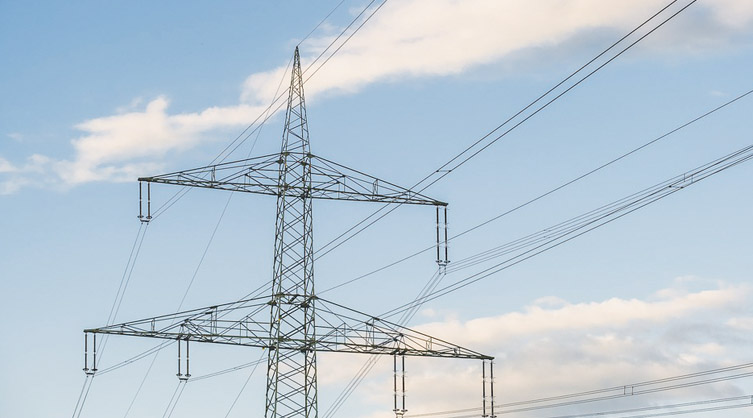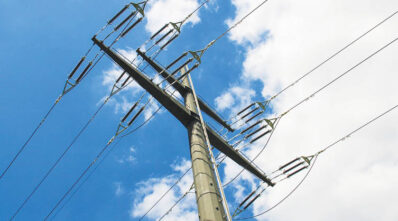Right of Way (ROW) Challenges in the Construction of Transmission lines
By EPR Magazine Editorial November 30, 2022 3:58 pm IST
By EPR Magazine Editorial November 30, 2022 3:58 pm IST

At the COP26 summit in Glasgow in Nov’2021, India pledged 500 GW of non-fossil fuel-based installed capacity by 2030 and agreed to meet 50 per cent of its energy requirement by renewable sources. To meet this ambitious target, many solar parks, hybrid wind-solar power projects, and offshore wind plants are under development.
Also, various new technologies are being introduced in grid-like Battery Energy Storage Systems (BESS) and Green Hydrogen Energy to reduce the carbon footprint. Globally, work is going on for developing the One Sun, One World, One Grid (OSOWOG). A matching transmission infrastructure shall be required to evacuate this massive quantum of renewable power. Moreover, with the gestation period of renewable power projects being less, building transmission infrastructure in a shorter time is a big challenge being faced by planners.
India is developing green energy corridors to evacuate renewable energy from generation points to the load centres by creating intra-state and inter-state transmission infrastructure through Regulatory Tariff Mechanism (RTM) and Tariff Based Competitive Bidding (TBCB) routes. Land acquisition and getting right of way (ROW) are becoming the biggest hurdles in constructing the transmission infrastructure in time due to rapid urbanisation and litigation issues. This paper aims to give information about the ROW and how it is a significant challenge for transmission utilities/ companies in Construction, O and M phases and the mitigation measures.
Introduction
Power transmission and other infrastructure projects generally face various issues relating to environmental/ forest clearances/ approvals, land acquisitions, ROW, and local resistance during their construction. India’s electricity demand is increasing rapidly due to industrial development, increased rural electrification and urbanisation. Accordingly, transmission and distribution networks are required to meet the increasing electricity demand. With the strong emphasis on renewable energy sources, mostly located in remote areas, their integration into the grid requires massive transmission infrastructure and that, too, in a shorter time frame. The construction of transmission lines is becoming more challenging every day because of getting the right of way, acquiring land and various statutory and environmental clearances. Due to increasing awareness and rapid urbanisation, it is getting tough to get right of way and route through urban areas, public parks, near schools, playgrounds, forest areas, wildlife corridors and in urban slums, metropolitan areas, public parks, etc., pose a severe challenge.
Govt of India, vide circular dated Oct 15, 2015, developed the guidelines for ROW compensation payment for resolving the ROW and early completion of transmission projects, including the tower base land and corridor land value compensation.
The various laws/acts relating to ROW compensation, litigation and land acquisition are The Telegraph Act of 1885, The Electricity Act of 2003, The Land Acquisition Act of 1894, The Right to Fair Compensation and Transparency in Land Acquisition, Rehabilitation and Resettlement (Amendment) Ordinance, 2014, The Forest (Conservation) Act, 1980, The Wildlife (Protection) Act, 1972, The Environmental (Protection) Act, 1986, The Indian Electricity (IE) Rules (77, 80(1), 80(2) for clearance), The Indian Limitation Act, 1963, The Work of Licensees Rule, 2006 Indian Standard IS-5613 etc.

The right of way in a transmission line is a strip of land required by a utility for constructing, maintaining and protecting its transmission line. Right of Way, also named as transmission corridor, is the minimum safety corridor around power lines to meet the required safety clearances and the electromagnetic field exposure limits. It allows the utility to keep the power lines clear of tall trees, buildings and other obstacles that may interfere with line operation and to ensure the safety of the public and environment.
The essential laws governing the right of way are the Indian Telegraph Act of 1885 and the Electricity Act of 2003. The provision contained in Sections 12 to 18 of the Electricity Act of 1910 remained in force until the rules under Sections 67 to 69 of the Electricity Act of 2003 were made. Also, the procedure and provisions under Sections 12 to 18 of the Electricity Act 1910 needed to be more adequate for major Generation or Transmission Projects. Hence, the express provision for speedy execution is made under Section 164 of the Electricity Act, 2003. (Previously under Section 42 of the Electricity Supply Act, 1948).
Section 67 of the Electricity Act, 2003 provides for a licensee to lay down interalia, electric supply lines, electric plant and other works and to do all other acts necessary for transmission or supply of electricity. It also stipulates that a licensee shall cause minor damage and fully compensate for any damage caused. In case of any difference or dispute, the matter shall be determined by the appropriate commission.
Disputes regarding the sufficiency of compensation shall be decided by the District Judge after receiving an application from any party concerned.
For the filling of Trees, the utility will have to take permission from a Tree officer under the Felling of Tree regulation act and the Preservation of Tree Act. Forest approval is required for laying the transmission lines through Forest.
Authored by Rajesh Gupta, Director, NETCL and Harshal Malewar, Deputy Manager, NETCL(JV of POWERGRID and OTPC)
We use cookies to personalize your experience. By continuing to visit this website you agree to our Terms & Conditions, Privacy Policy and Cookie Policy.